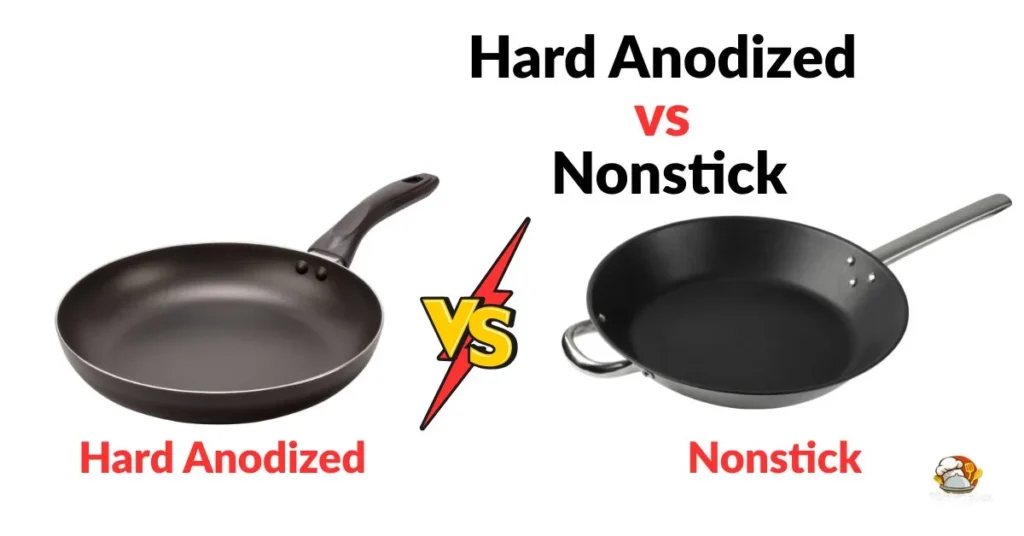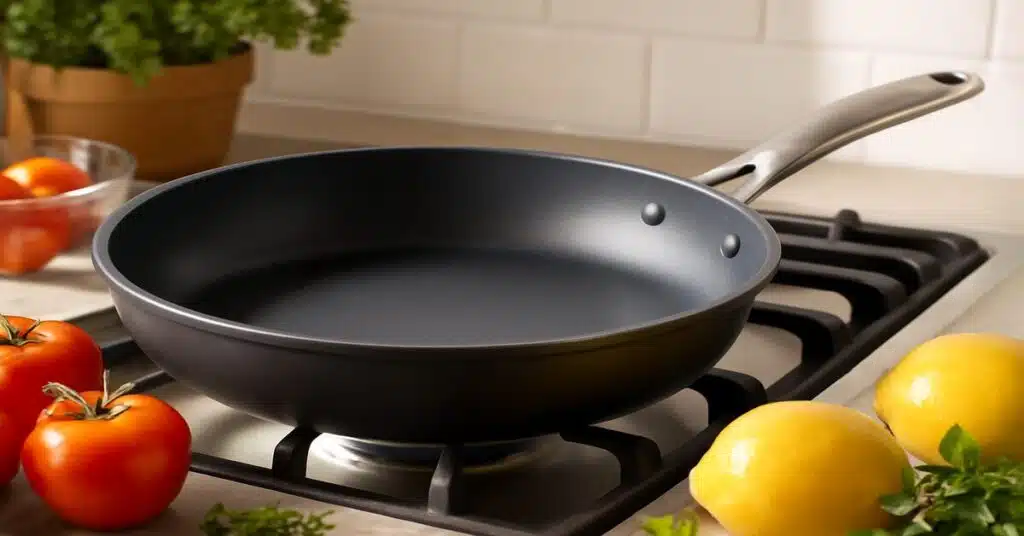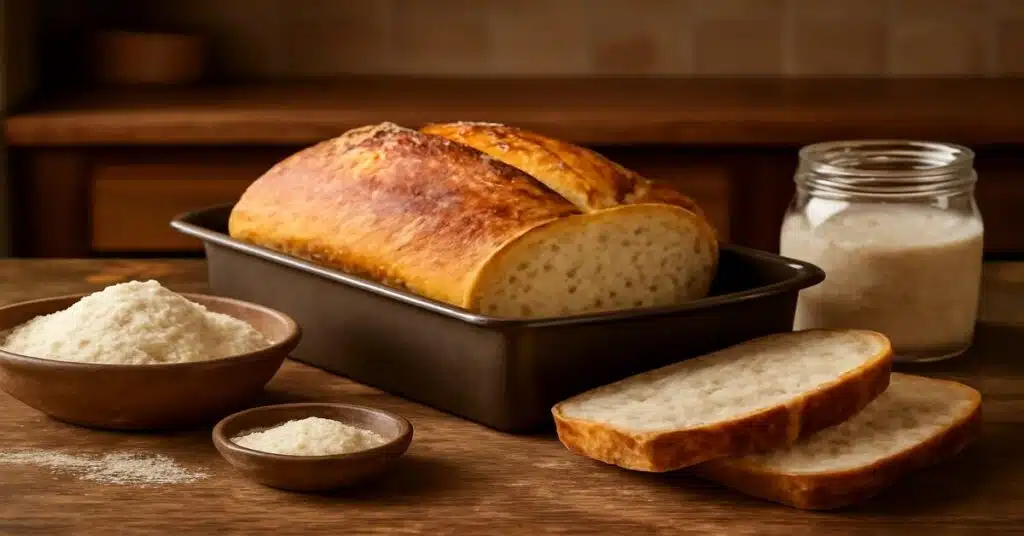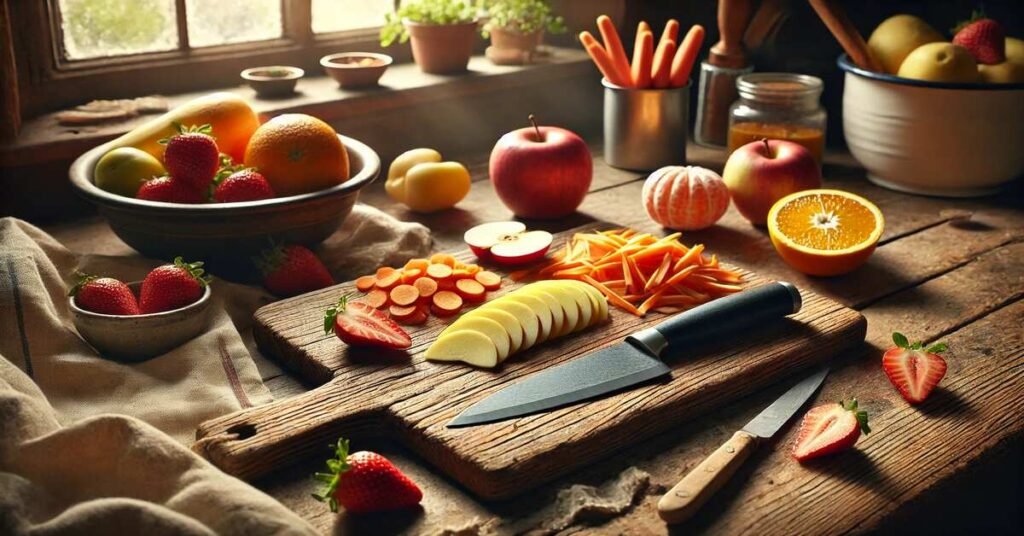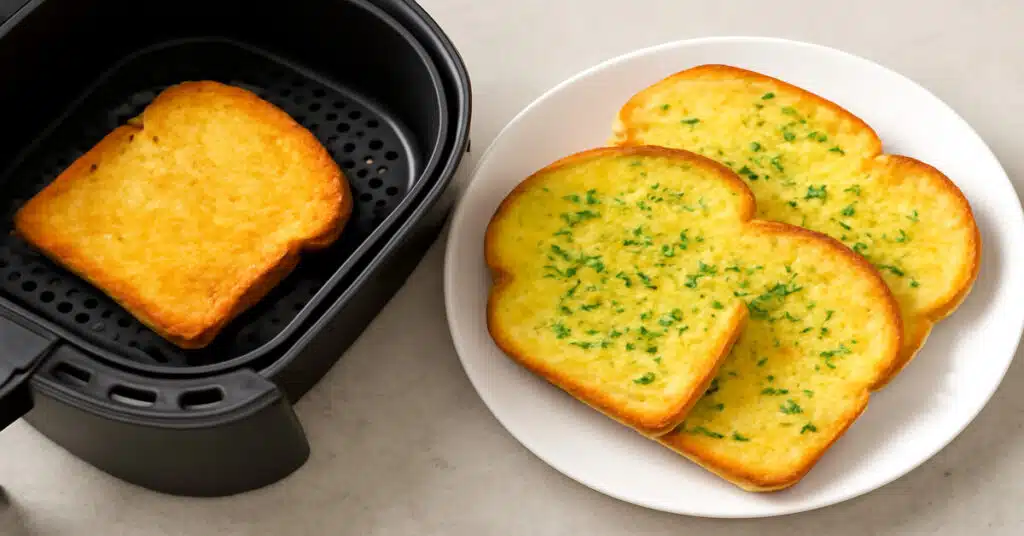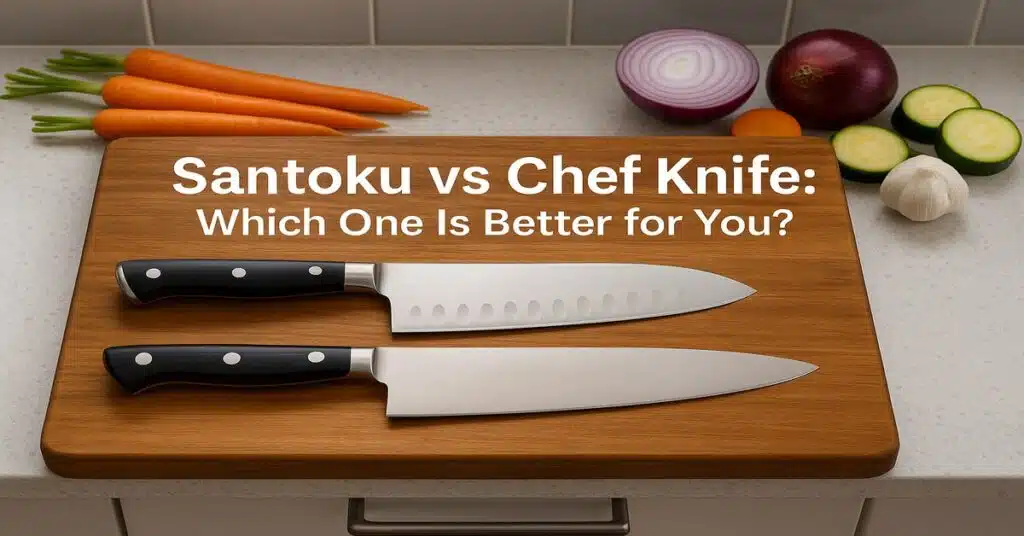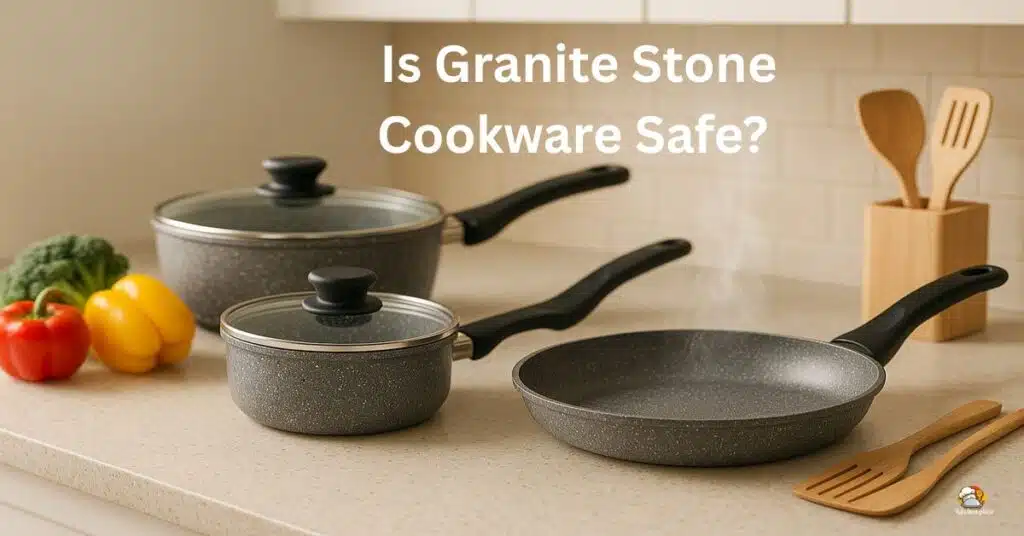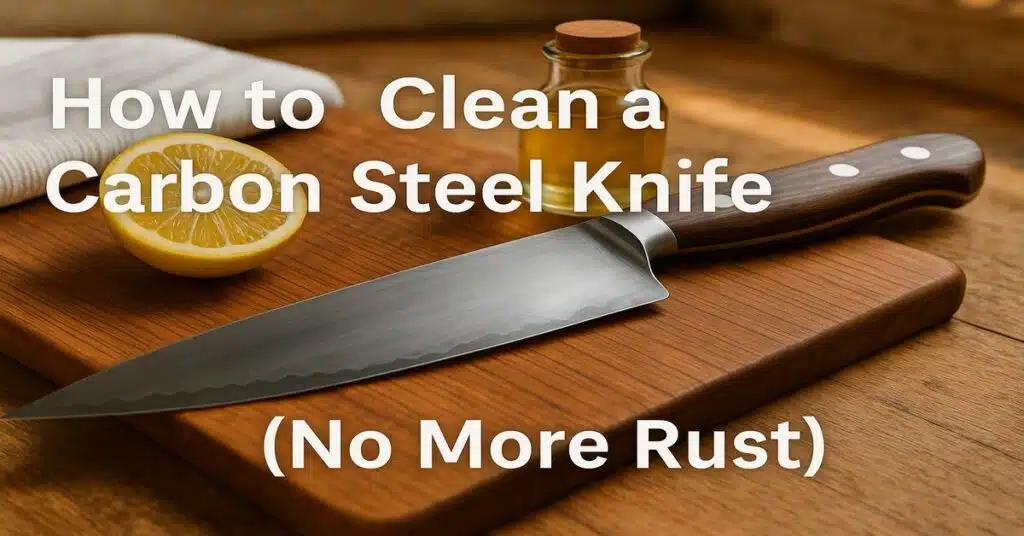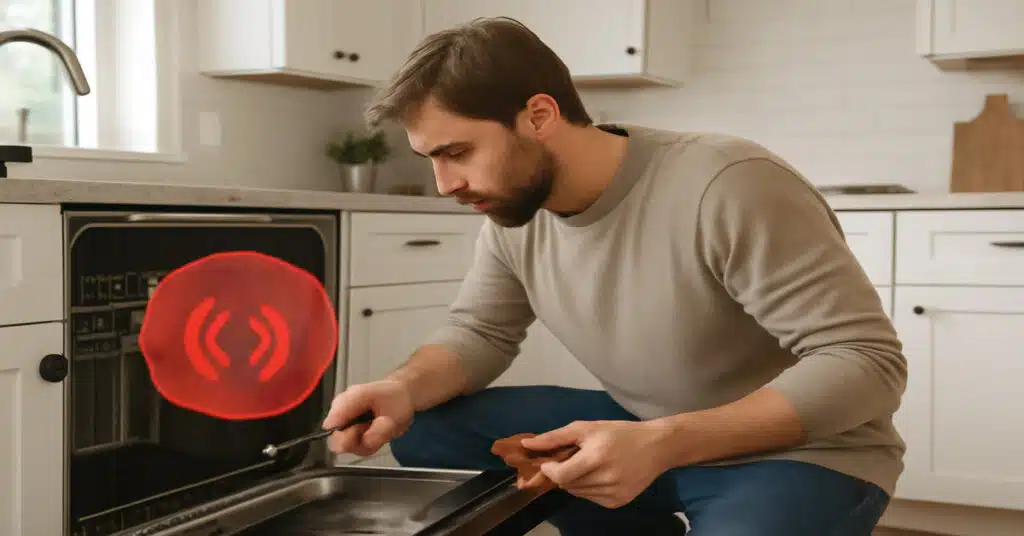Choosing between hard anodized vs nonstick cookware is one of the most common kitchen dilemmas in 2025. The right pan isn’t just about cooking taste — it’s about safety, durability, cleaning effort, and long-term cost.
As someone who has tested both hard anodized aluminum pans (Calphalon, Circulon) and nonstick cookware (Teflon, ceramic, Cuisinart, GreenPan) in my own U.S. kitchen, I know exactly how they perform in real life.
Many readers ask me: “Is hard anodized cookware safer than nonstick? Which lasts longer? And which is really worth buying?”
In this guide, I’ll give you a clear, side-by-side comparison — covering health concerns (PFOA, PTFE, FDA guidelines), cooking performance, lifespan, and price — so you can confidently pick the right cookware for your kitchen.
👉 And if you’d like my full tested list of top picks, check out the Best Hard Anodized Cookware 2025 Guide.
What is Hard Anodized Cookware?
Hard anodized cookware is made from aluminum that goes through an electrochemical anodization process. This makes the pan’s surface stronger, denser, and scratch-resistant compared to regular aluminum. The result is a durable pan with a smooth, almost nonstick finish that works well for daily cooking.

Is hard anodized cookware safe?
Yes. Modern hard anodized pans are PFOA-free and FDA-approved. They do not react with food as long as the surface stays intact.
Read the full guide: Is Hard Anodized Aluminum Cookware Safe?
Key Features of Hard Anodized Cookware:
- Durable: Lasts 5–10+ years with proper care.
- Even heat: Heats quickly and cooks food evenly without hot spots.
- Naturally smooth surface: Works like nonstick, but without extra coating.
- Scratch-resistant: Much tougher than standard aluminum pans.
- Trusted brands: Calphalon, Circulon, Anolon, All-Clad.
I personally like hard anodized pans for steak and stir-fry. They hold up well under high heat, making them better than traditional nonstick for searing meat or stir-frying vegetables.
What is Nonstick Cookware?
Nonstick cookware usually has an aluminum base with a coating such as PTFE (Teflon), ceramic, or granite. These coatings stop food from sticking, making the pans very popular for quick and easy cooking.
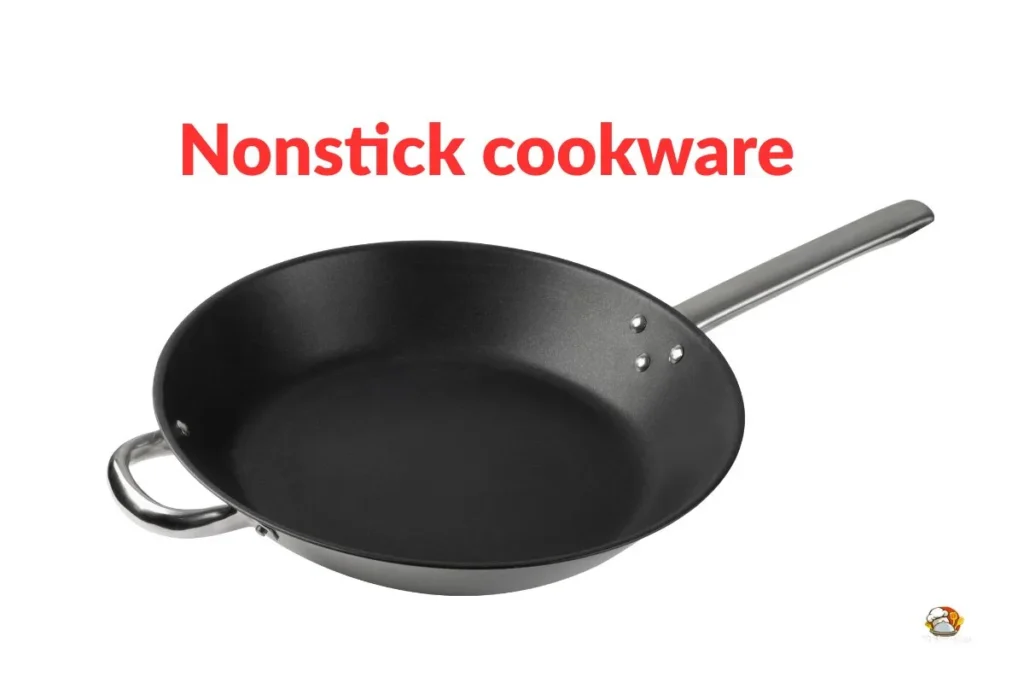
Is nonstick cookware safe?
Yes, when used properly. Most modern nonstick pans are PFOA-free. However, PTFE (Teflon) coatings can release fumes if heated above 500°F. Ceramic nonstick is safer at high heat, but its coating usually wears out faster.
Advantages of Nonstick Cookware
- Beginner-friendly: Very easy for new cooks to use.
- Perfect for delicate foods: Works well for eggs, pancakes, and fish.
- Quick cleanup: Often dishwasher-safe and needs little scrubbing.
Weak Points of Nonstick Cookware
- Scratches easily: Metal utensils can damage the coating.
- Shorter lifespan: Usually lasts 2–5 years before losing nonstick power.
- Heat-sensitive: PTFE/Teflon may degrade under very high heat.
Popular Brands to Know
T-fal, Cuisinart, GreenPan, Tramontina.
I often use a nonstick skillet when I’m in a rush. For quick breakfasts, nothing beats how smoothly eggs slide off the pan — and the easy cleanup saves me extra time
Hard Anodized vs Nonstick – Key Differences
Durability & Lifespan:
Hard Anodized:
Built to last 5–10 years or more. Stronger, denser, and more scratch-resistant than regular nonstick pans.
👉 If durability is your top priority, I’ve tested several sets in my Best Hard Anodized Cookware 2025 Guide that lasted over 8 years.
Nonstick:
Usually lasts 2–5 years. The coating wears off faster if you use metal utensils or run it through the dishwasher often.
Winner: Hard anodized (better long-term value).
Safety & Health Concerns:
Hard Anodized:
Safe as long as the surface is intact. No leaching into food, and many experts say anodized aluminum is much safer than bare aluminum pans, especially when cooking acidic foods.
Nonstick (PTFE/Teflon):
Safe at normal heat, but according to Wikipedia on PTFE, coatings begin to decompose and may release harmful fumes when heated above about 500°F (260°C) (Wikipedia – Polytetrafluoroethylene). Also, EPA’s PFAS pages warn about long-term exposure risks related to PFOA/PFOS in older nonstick coatings (EPA – PFAS Explained).
Does hard anodized cookware cause cancer?
No. According to the FDA, anodized aluminum is non-reactive and safe for daily cooking.
Winner: Both are safe if used correctly, but anodized is slightly more worry-free.
Cooking Performance:
Hard Anodized:
Handles medium to high heat well. Perfect for steak, stir-fry, and browning — high heat helps trigger the Maillard reaction, as shown in as shown in The Kitchen’s guide to pan-searing steak.
Nonstick:
Works best for low to medium heat. Ideal for eggs, pancakes, and delicate foods that need easy release.
Winner: Nonstick for delicate foods, Hard Anodized for searing and high-heat recipes.
Cleaning & Maintenance:
Hard Anodized:
Best washed by hand with mild soap and a soft sponge. Avoid bleach or steel wool.
Nonstick:
Many are dishwasher-safe, but frequent dishwashing shortens their lifespan. Needs gentle care.
Winner: Nonstick for convenience, Hard Anodized if you don’t mind hand washing.
👉 If you’re unsure how to care for these pans, check my step-by-step guide: How to Clean Hard Anodized Cookware.
Price & Value:
Hard Anodized:
Slightly higher upfront cost, but longer-lasting. Better long-term investment.
👉 If you’re comparing long-term value, I’ve included both budget-friendly and premium picks in my Best Hard Anodized Cookware.
Nonstick:
Cheaper and widely available, but needs more frequent replacement.
Winner: Hard Anodized for overall value, Nonstick for affordability.
👉 Curious how anodized stacks up against other materials? See my full test: Hard Anodized vs Stainless Steel.
Pros & Cons Comparison
Here’s a quick side-by-side look at the pros and cons of hard anodized cookware vs nonstick cookware:
| Feature | Hard Anodized Cookware | Nonstick Cookware |
| Durability | ✅ Long-lasting (5–10+ years) | ❌ Shorter lifespan (2–5 years) |
| Safety | ✅ No leaching, FDA-approved | ⚠️ PTFE/Teflon risk if overheated |
| Cooking | ✅ Handles high heat, great for steak & stir-fry | ✅ Perfect for eggs, pancakes, delicate foods |
| Price | 💲💲 Slightly higher upfront, but lasts longer | 💲 More affordable, but needs frequent replacement |
| Cleaning | Hand-wash recommended; avoid harsh scrubbers | Dishwasher-safe (but coating wears faster) |
| Oven-Safe | Many brands oven-safe up to 400–450°F | Some are oven-safe, but usually at lower temps |
| Best Use Case | 👨👩👧 Families & home chefs who want long-term value and high-heat cooking | 🥞 Beginners & busy cooks who want quick, low-heat meals |
Quick Verdict:
- Choose Hard Anodized if you want durability, high-heat cooking, and long-term value.
- Choose Nonstick if you need convenience, low-heat cooking, and budget-friendly options.
👉 For a full breakdown, see my guide on the Hard Anodized Cookware Pros and Cons.
When to Choose Hard Anodized vs Nonstick?
Many readers ask me: “Which cookware is better — hard anodized or nonstick?”
The answer depends on your cooking style, budget, and long-term needs.
Choose Hard Anodized If:
- You cook daily and need durable pans.
- You often use medium to high heat for steak, stir-fry, or sautéing.
- You want cookware that can last close to a decade with proper care.
- You’re a family cook or a home chef who values long-term investment.
👉 Some people also compare anodized with ceramic pans — see my guide on Hard Anodized vs Ceramic Cookware.
Choose Nonstick If:
- You mostly cook simple, low-heat meals like eggs, pancakes, or quick dinners.
- You prefer easy cleaning with little scrubbing.
- You’re on a budget or just starting out in the kitchen.
- You want something lightweight and beginner-friendly.
Quick Verdict:
- Hard Anodized: Best for families, high-heat cooking, and long-term value.
- Nonstick: Best for beginners, budget buyers, and quick low-heat meals.
Final Verdict Hard Anodized vs Nonstick
Choosing between hard anodized vs nonstick cookware really depends on your lifestyle and cooking habits.
If you want durable cookware that handles high-heat cooking (steak, stir-fry, sauces) and lasts close to a decade, then go with hard anodized cookware. It’s a smart long-term investment for families and serious home cooks.
If you want budget-friendly, beginner-friendly cookware for quick, low-heat meals (like eggs, pancakes, or simple dinners), then choose nonstick cookware. Just remember, you’ll probably need to replace it every few years.
Quick Recommendation (2025 Guide):
- Best for families & long-term durability → Hard Anodized Cookware
- Best for beginners & quick cooking → Nonstick Cookware
➡️ Want my full breakdown with brand recommendations? Check out my guide: Best Hard Anodized Cookware 2025.
FAQs :Hard Anodized vs Nonstick
Which is better, hard anodized or nonstick cookware?
Hard anodized cookware is better for durability, high-heat cooking, and long-term use. Nonstick cookware is better for beginners, quick meals, and low-heat recipes. The choice depends on whether you want long-lasting value or easy everyday cooking.
Is hard anodized cookware safe for cooking?
Yes. Hard anodized cookware is FDA-approved and considered safe because the anodization process seals the aluminum surface. It does not react with food as long as the coating is intact.
How long does hard anodized cookware last?
With proper care, hard anodized pans last 5–10 years or more. Hand washing and avoiding metal utensils can extend their lifespan. In contrast, nonstick pans usually last only 2–5 years.
Is hard anodized cookware safe if scratched?
Light scratches usually do not affect safety. But if the inner layer is deeply damaged and raw aluminum is exposed, it’s best to replace the pan. Always use wooden, silicone, or nylon utensils to reduce scratches.
Does hard anodized cookware cause cancer?
No. According to the FDA, hard anodized cookware does not cause cancer. The anodization process makes aluminum non-reactive, meaning it will not leach into food under normal use.
Which cookware is best for health — anodized, nonstick, or stainless steel?
For health, stainless steel is the safest because it has no coating. Hard anodized is also safe if the surface is intact. Nonstick pans are fine for low to medium heat, but overheating PTFE/Teflon above 500°F can release fumes, so extra care is needed.
👉 Want to compare? Read my test: Hard Anodized vs Cast Iron.
Is nonstick ceramic better than hard anodized?
Ceramic nonstick pans are great for beginners and safe at higher heat, but they wear out faster (1–3 years). Hard anodized pans last longer (5–10 years) and perform better for high-heat cooking. Choose ceramic if you want eco-friendly coating, anodized if you want durability.
👉 Want to compare? Read my test: Hard Anodized vs Ceramic Cookware.
Which cookware is better for budget vs premium buyers?
Nonstick is usually cheaper upfront, but you may replace it often. Hard anodized costs more at first but offers better long-term value.
👉 See my breakdown: Best Budget vs Premium Cookware 2025.
About the Author :
MD Soazim has personally tested both hard anodized and nonstick cookware in his U.S. kitchen to compare their safety, durability, and cooking performance. In this 2025 guide, he shares real-life insights, backed by trusted sources, to help readers choose the right cookware for their home.

